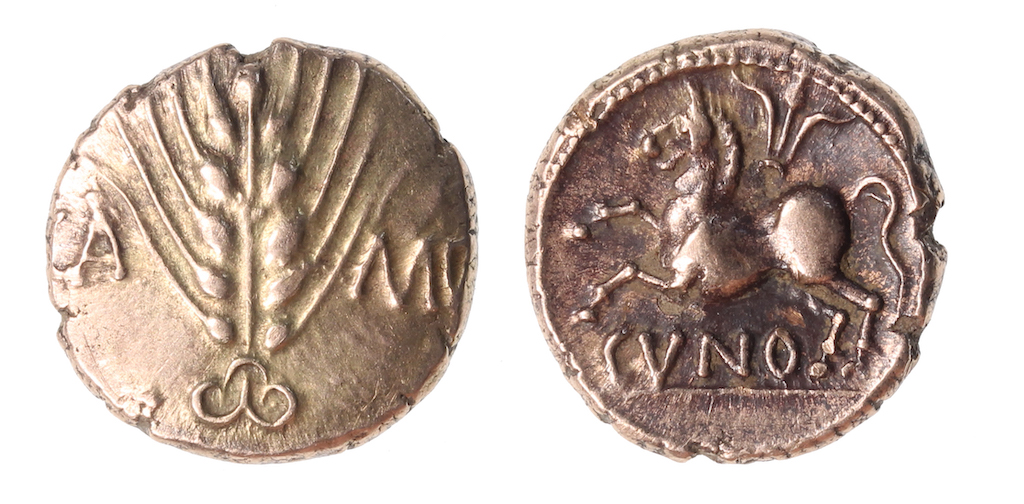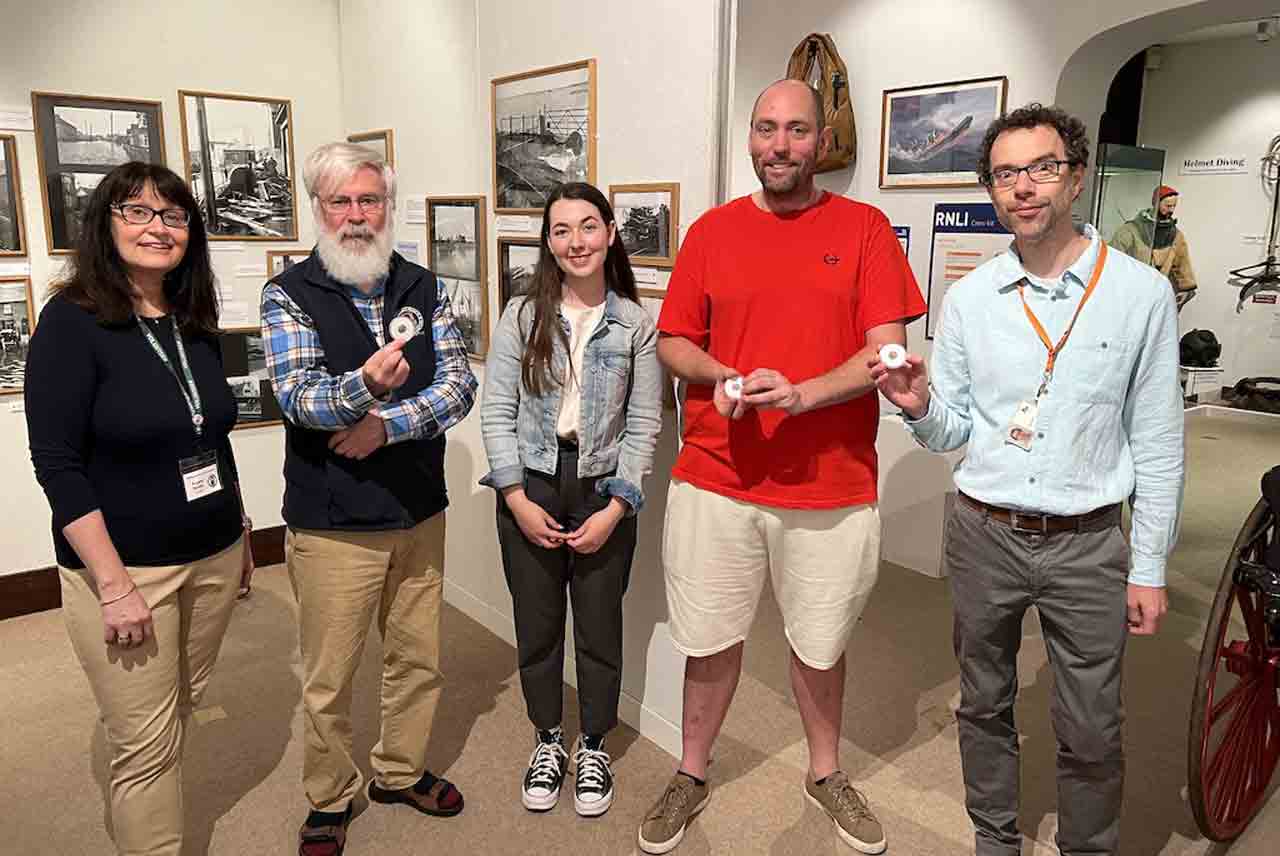From left to right: Angela Boddy and Peter Banbury (Trustees of Whitstable Museum and Gallery) Isabelle Diggle (Finds Liaison Officer) Jason Reilly (Finder of the coins) and Craig Bowen (Collections and Learning Manager, Canterbury Museums & Galleries)
Three Iron Age gold staters have found a new home at Whitstable Museum with the help of Canterbury City Council’s Canterbury Museums and Galleries team following two successful funding bids.
Uncovered in Seasalter by metal detectorist Jason Reilly in 2020, the artefacts date from AD8 to AD40 and were minted under the order of Cunobelin, British ruler of a large area of south east England.
Although they were coins, these staters would not have been used to pay for things but were instead high-value items likely belonging to someone with high social status.
The detailed inscriptions and designs are intended to emulate Roman coinage from Europe.
Because of this, the Romans saw Cunobelin and his tribes as more sophisticated than other Iron Age communities which helped cultivate a good relationship between the two cultures.

This acquisition forms part of the museum’s work to extend its display of archaeology to cover all periods, from the stone age to mediaeval times.
The staters will provide an insight into Whitstable’s Iron Age history and it is hoped these items will be joined by other fascinating local finds in the near future.
The artefacts were purchased through the Portable Antiquities scheme after securing funds from the V&A Purchase Fund and The Headley Trust.
Whitstable Museum also contributed the final 10 per cent of the funds needed.
Cllr Charlotte Cornell, Cabinet Member for Heritage, said: “Well done to Whitstable Museum and Canterbury Museums and Galleries for securing such a brilliant addition to Whitstable’s archaeological collection.
“It’s so important that people can enjoy these pieces of the district’s rich history and I look forward to admiring them in their new display very soon.”


Published: 8 August 2023
